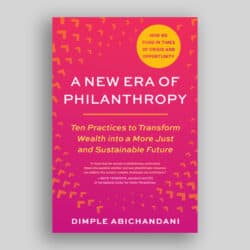The world of charities is a changing mixture of new organizations registering and older groups losing their status. It is difficult, at times, to get a grasp on how the charitable sector is shifting in Canada. This research takes a snapshot of the calendar year of 2017 and tries to discern trends. It is accurate for the time, in early January 2018, when the data was collected.
This research is based on monitoring the Canada Gazette, which reports on revocations by the Canada Revenue Agency (CRA), and information from the CRA charity database. This is not an exact science because information on the charity database changes on a regular basis as charities are registered or revoked.
There are three major points to be made: the number of charities remains stable; a charitable “marketplace” is at work in the creation and revocation of charities; and there is a whole new set of charities, which is slowly changing the composition of the sector.
Number of charities
The number of Canadian charities is relatively stable and has been that way for a few years. On January 17, 2017, there were 86,244 charities. By January 3, 2018, 86,425 charities existed across the country – an increase of 181 groups. But, the story is more complicated than that.
On Saturdays, the Canada Gazette issues notifications of the revocation of charities.
In the 2017 calendar year, it posted 1,328 revocations as follows:
- 688 voluntary revocations (where the charity requests revocation);
- 550 failures to file (the T3010 Public Information Return);
- 37 mergers (which are voluntary revocations accounted for separately);
- 32 revocations for cause after an audit; and
- 21 revocations for loss of corporate status.
The four heads of charity are the advancement of religion, welfare (the relief of poverty), the advancement of education, and community benefit (other charitable purposes not under the three other heads). As a crude benchmark, one can compare the percentage of revocations by head of charity against the percentage of all registered charities in those categories.
Using this measure, we find that religion was under-represented in revocations (38.3% of all charities and 31.7% of all 2017 revocations). Welfare and community benefit had slightly more revocations (22.5% of all charities and 23.5% of all 2017 revocations for welfare, and 23.1% of all charities and 24% of all revocations for community benefit). Education also had more revocations (16.1% of all charities and 20.8% of revocations). The share of charities dedicated to advancing education declined from 16.2% to 16.1% of all charities between 2016 and 2017. One reason is that an unexpectedly larger number of education charities were revoked in those two years. There were 141 more revocations than their percentage of all charities would have predicted.
The number of charities registered in the 2017 calendar year was 1,395.[1] This is only an increase of 67 charities and not the 181 mentioned earlier. The reason for the different number is that some of the charities revoked in 2016 or 2017 could re-register if they paid a $500 reinstatement fee. Information from an access to information request to CRA[2] shows that re-registrations accounted for an average of 215 registered charities per year from 2013 to 2016.
All that being said, the number of charities has plateaued and appears to be slowly increasing.
Charitable marketplace
CRA has said that it has a relatively open policy to registration. It will allow groups to register, giving them the benefit of doubt that there is a need for their presence and ideas. It also appears, from the characteristics of the failure to file and voluntary revocations, that the Charities Directorate is actively looking at moribund charities and culling the register.
There are several ways in which charities can lose their status, but the two major reasons are failure to file their public information return and voluntary revocation. The following two sections look at the nature of groups revoked under these areas.
Failure to file the public information return
One of the major themes for the 550 groups in this category was that their returns demonstrated financial difficulties. Eighty-five groups had declining revenues and 66 groups reported $0 in revenues for three or more years or the term of the group’s existence. Eighty-one of the groups had changing revenue streams, some of which were caused by government funding reductions. Several other groups showed a lack of traction after an initial burst of fundraising.
The largest number of failure to file revocations came under the religion head of charity, but no one denomination led this. In fact, the major group here was the “other denomination” category, which had 62 (39%) of all the 159 religion revocations.
That being said, religion was actually under-represented, in terms of percentage, in failure to file revocations (38.3% of all charities and 28.9% of failure to file revocations). Welfare and community benefit groups were slightly over-represented (welfare was 22.5% of all charities and 24.0% of revocations and community benefit was 23.1% of all charities and 25.6% of revocations). Education groups were over-represented (16.1% of all charities and 21.5% of all revocations). What stood out here were the 43 revoked groups under “support of schools and education.” This category includes scholarships, bursaries, and awards, which are notorious for being short-lived.
Voluntary revocation
Revenue also played a significant role in the 688 voluntary revocations: 98 of the groups reported decreasing revenue streams. Meanwhile, 78 groups reported $0 in revenue for three years or the term of the group’s existence.
The 215 religion voluntary revocations included 52 under various categories, 69 “other denominations” and 94 specific congregations as follows:
- 18 United;
- 15 Roman Catholic;
- 14 Anglican;
- 11 Baptist;
- 10 Pentecostal;
- 7 Lutheran;
- 5 Presbyterian;
- 4 Mennonite;
- 3 Baha’i;
- 2 Hindu, 2 Buddhist and 2 Seventh Day Adventist; and
- 1 Synagogue.
Sixty-four (45.4%) of the education voluntary revocations were under the support of education category (scholarships, bursaries, and awards).
It should also be noted that several the voluntary revocations were candidates for failure to file revocation. It could be that voluntary revocation was negotiated instead.
Composition of the charitable sector
There were approximately 1,395 charities registered in 2017. These charities came from welfare (441 groups); religion (423 groups); community benefit (297 groups: 163 from community benefit and 134 from health); and education (234 groups).
Under the religion head of charity, the following new places of worship were created:
- 268 registered as “other denominations”
- 20 Islamic religious groups;
- 15 missionary organizations and propagation of Gospel;
- 14 Jehovah’s Witnesses;
- 9 synagogues, Baptist, Pentecostal and Hindu congregations;
- 7 Roman Catholic and Buddhist congregations;
- 6 Anglican
- 5 Sikh
- 4 Seventh Day Adventist;
- 3 Presbyterian; and
- 2 United, Lutheran and Baha’is congregations.
Under the welfare head of charity there was no discernable trend. The community benefit head of charity welcomed the following types of charities:
- 34 animal rescue groups;
- 31 libraries, museums, and other repositories;
- 13 preservation of sites, beauty and historical; and
- 6 cemetery societies.
Under the education head of charity there were 73 cultural activities and promotion of the arts charities, which includes 36 arts organizations (theatre, dance, music, visual arts, etc.) and 10 religious schools.
Year of registration data
There was one major pattern from the dates of registration of the 2017 revoked charities. Registration dates are categorized by decade: the 1960s,[3] 1970s, 1980s, 1990s, 2000s, and 2010s. Of the 1,328 revocations, 609 were charities registered in 2000 and later, or 45.9% of the total. This illustrates the maturation process for charities. The older charities survived this culling, while newer charities are still trying to gain steady revenue and community support.
Older charities tend to lose their status due to decreased volunteer and community participation, loss of funding or founder, and older fundraising models that do not garner the same returns.
In 2017, we lost 76 of the January 1, 1967 groups to voluntary revocation. Fifty-four of these (71%) were religious. Most of these were mainstream religious parishes that were losing parishioners and either merged with another congregation or closed completely (especially common in smaller communities).
Forty-two 1967 charities were revoked for failure to file. Again, most of these were religious.
The evolving charitable sector
In this snapshot, the absolute number of charities under the religion, community benefit, and education heads of charity decreased since July 2016, making welfare the only head of charity to grow in both percentage and numbers. It went from 19,190 groups in 2016 to 19,403 at the end of 2017. In terms of percentages, welfare went from 22.2% of all charities in July 2016 to 22.5%.
Looking at the longer-term trend since July 2001, religion has gone from 40.7% of all charities to 38.3%. Community benefit has decreased from 24.2% to 23.1%, and education went from 16.4% to 16.1%. During that same period, welfare increased from 18.7% to 22.5%.
Conclusion
Research over the years and an access to information request has shown that CRA has begun to revoke charities using the reason that an inactive charity “ceases to comply with the Act.” Searches in the charities database indicate that there are a fair number of groups that report $0 in revenues for more than five years across the four heads of charity. This all suggests that the number of charities should remain stable over the short term, at least until the CRA has dealt with the moribund charities.
Some traditional ways of charity, such as support of schools and education, are having challenges. In 2017, 107 lost their status; 43 were revoked for failure to file; and 64 voluntarily revoked their status. Mainstream congregations, in both rural areas and city centres, are continuing to deal with the loss of congregations, expensive physical plants, and loss of key volunteers. Several community-based fundraising efforts are finding diminishing returns.
The composition of the charitable sector is slowly changing, with welfare groups being the current leader in terms of growth. This may be because of the economy or of groups looking at challenges such as homelessness or food security and trying to meet these issues head on. Taking a research snapshot like this sheds light on the creation and revocation of charities and points, albeit in a partially-illuminated way, toward where the sector is heading.
[1] The charities database is an evolving document. In early January 2018, there were 1,395 charities registered in 2017. By mid-February, that number had risen to 1,475 as new charities were approved and added to the database.
[2] The table comes from Access to Information request A-089830 regarding the number of charities assessed penalties under Income Tax Act section 188.1.
[3] The charity register was created January 1, 1967 and there are currently more than 14,800 charities with that registration date.


